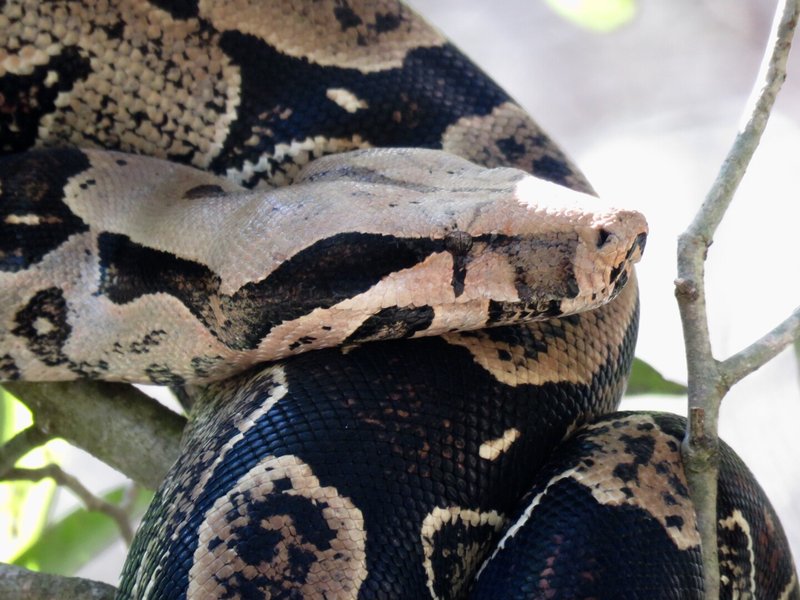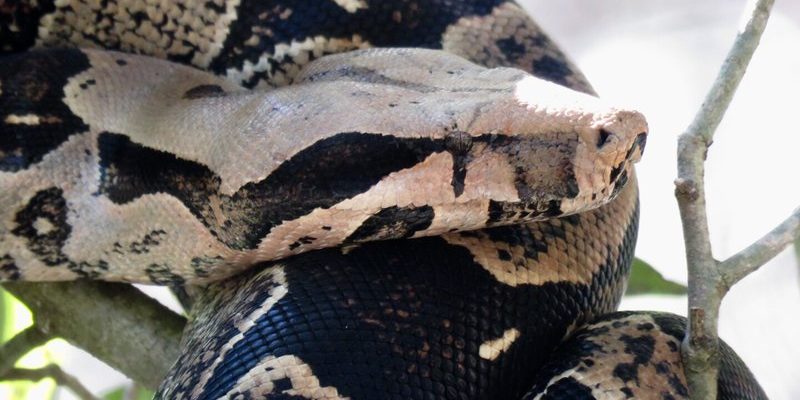
The journey of the boa constrictor starts millions of years ago, weaving through a tapestry of environmental changes and genetic adaptations. Imagine traversing through ancient earth, where continents shifted and climates altered, shaping the destiny of countless species. In this context, the boa constrictor’s lineage offers a glimpse into how life evolves under pressure, adapting to survive various challenges.
So, where does the boa constrictor fit into this grand evolutionary narrative? Honestly, it’s a story of resilience and adaptability. Let’s explore this snake’s family tree, its unique characteristics, and the reasons behind its continued success across diverse habitats.
The Origins of the Boa Constrictor
The story of the boa constrictor begins with its ancestors, who are believed to have emerged around 60 million years ago, shortly after the dinosaurs disappeared. They belong to a larger family, the Boidae, encompassing various species of snakes. Picture these early snakes—slender, agile, and keen—navigating through dense vegetation as they hunted small prey.
Over time, the boa constrictor branched off from other snake families. Its evolutionary journey was marked by the development of impressive features, such as its constricting behavior. This skill allows the boa to subdue its prey by wrapping around it tightly, ensuring it suffocates before being consumed. This strategy was a game-changer, allowing the boa to thrive in environments teeming with competition for food.
As the climate changed, the boa constrictor adapted accordingly. You might be wondering how this works. Well, snakes are excellent at adapting their behaviors and habitats. The boa constrictor learned to adjust its diet and hunting strategies, allowing it to inhabit various environments—from tropical rainforests to arid deserts. This versatility played a pivotal role in its evolutionary success.
Physical Characteristics Driven by Evolution
Boa constrictors are not just famous for their size and strength. They possess unique physical traits that have evolved for survival. One of the most distinctive features is their patterned skin. The coloration helps them camouflage in their natural habitats, allowing them to blend seamlessly with their surroundings. It’s like a living piece of art, painted by nature itself.
Another important trait is their size. Boa constrictors can grow quite large, with some individuals reaching lengths of up to 13 feet! This impressive size makes them apex predators in their ecosystems. Here’s the thing: being larger not only helps them consume bigger prey but also deters potential threats. It’s a clear example of how evolution favors traits that enhance survival.
Their ability to sense heat is another fascinating characteristic. Boa constrictors possess specialized thermal receptors that allow them to detect the body heat of potential prey. This skill is particularly useful in low-light conditions, giving them an edge during nighttime hunts. Imagine the thrill of being able to “see” the warmth of your next meal, even when it’s hidden!
Geographical Spread and Adaptation
Originally, boa constrictors were found in a limited geographical range, primarily in South America and parts of Central America. However, as time passed, they began to spread across different regions. This expansion is a direct result of their adaptability and resilience.
The shift in climate and the availability of food sources played a crucial role in this geographical spread. As habitats changed, these snakes traveled through forests, swamps, and savannas, adapting to each environment. For instance, in the dry regions, they became more terrestrial, while in the moist areas, they thrived in trees, showcasing their flexibility.
Their ability to adapt to varied conditions means that boa constrictors can be found in diverse environments today, from rainforests to scrublands. This adaptability is essential for their survival, allowing them to take advantage of different ecosystems and food sources.
The Role of Boa Constrictors in Their Ecosystems
Boa constrictors play a vital role in maintaining the balance of their ecosystems. As predators, they help control the populations of small mammals, birds, and reptiles. This natural regulation is crucial for preventing any single species from becoming too dominant, which could disrupt the overall health of the environment.
Their role doesn’t stop there; boa constrictors also serve as prey for larger animals, including eagles and big cats. This interdependence illustrates how every creature, no matter how formidable, is part of a larger web of life. You might think of it as nature’s way of maintaining balance—each species has its part to play.
Moreover, their existence can indicate the health of their environments. If boa constrictors are thriving, it often signals a well-balanced ecosystem. Conversely, a decline in their numbers can suggest problems within a habitat, such as loss of prey or habitat destruction.
Conservation Status and Challenges
Despite their adaptability and resilience, boa constrictors face several challenges today. Habitat destruction due to deforestation, urban development, and agriculture threatens their natural homes. You might feel a pang of concern, knowing that these magnificent snakes are losing ground in their fight for survival.
Additionally, illegal wildlife trade poses a significant threat. Many boa constrictors are captured for the exotic pet trade, putting further strain on wild populations. Conservation efforts aim to protect these creatures and their habitats. Organizations are working to create protected areas and raise awareness about the importance of biodiversity.
It’s crucial for all of us to understand the role of boa constrictors in our ecosystems and advocate for their protection. Every effort counts, whether it’s supporting conservation programs or simply spreading awareness about these incredible snakes.
The evolutionary history of the boa constrictor is a testament to the power of adaptability and resilience. From their ancient origins to their current status in various ecosystems, they continue to be a symbol of nature’s ingenuity. As we reflect on their journey, we see that every creature’s existence plays a part in the grand story of life on Earth.
By understanding the evolutionary history of the boa constrictor, we can appreciate its role in our world and work together to ensure its survival for generations to come. So next time you hear about a boa constrictor, remember its remarkable story—a tale of evolution, adaptation, and the delicate balance of life.

